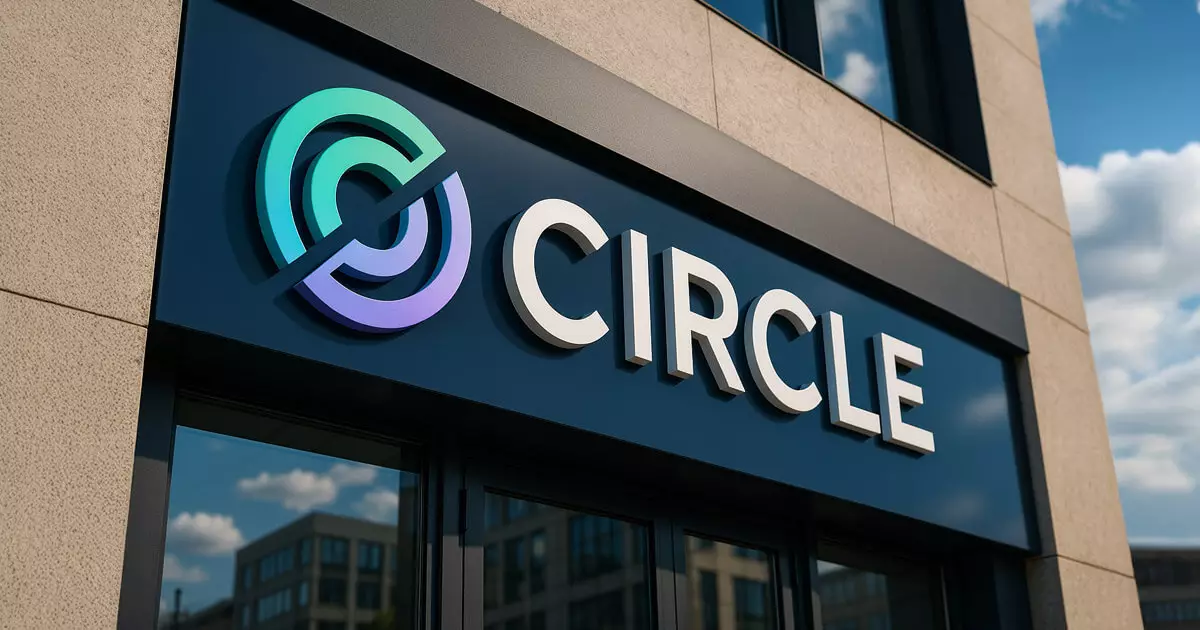The cryptocurrency landscape is evolving at an unprecedented pace, characterized by regulatory challenges and market volatility. Amidst this turmoil, Circle, the issuer of the USDC stablecoin, is reportedly advancing its plans for an initial public offering (IPO) while simultaneously engaging in acquisition discussions with major players like Coinbase and Ripple. This dual approach raises questions about the true intentions behind Circle’s IPO aspirations. Here, we delve into the complexities of Circle’s predicament, provide insight into its potential trajectories, and explore the implications for the broader cryptocurrency market.
The IPO Gamble
Circle’s decision to pursue an IPO, targeting a $5 billion valuation, positions it at the intersection of ambition and uncertainty. While entering the public market could provide access to much-needed capital and enhance its visibility, it also subjects the company to increased scrutiny and regulatory oversight. Investors must ponder whether this move serves as a genuine effort to capitalize on its foundational growth or merely a strategic diversion as conversations with Coinbase and Ripple unfold.
The $5 billion projection may be inflated given the tumultuous backdrop of the crypto market. The ongoing challenges regarding regulatory clarity and investor sentiment could pose significant obstacles that erode Circle’s anticipated value. Aiming for the public spotlight could inadvertently highlight vulnerabilities rather than strengths—something potential investors should heed carefully.
Inside the Acquisition Talks
The prospect of an acquisition raises the stakes significantly. Reports indicate that Circle has engaged in informal discussions with both Coinbase and Ripple, although no formal bids are currently tabled. The complexities of these negotiations underscore a larger theme in the cryptocurrency industry: the ongoing consolidation and the narrative of survival of the fittest.
Coinbase emerges as the more logical suitor, given its intrinsic link to Circle’s USDC ecosystem. Their financial partnership allows Coinbase to benefit from the revenue generated by USDC transactions, generating a potential windfall. The inherent interdependence between the two could lead to a synergistic acquisition; after all, cryptocurrency exchanges thrive on liquidity and an expansive product offering, making Circle a valuable asset in augmenting Coinbase’s competitive edge.
Conversely, Ripple’s overtures, accompanied by a bid in the $4 billion to $5 billion range, were deemed insufficient. Ripple’s published financial clout, primarily due to its substantial XRP holdings, positions it as a formidable player in the acquisition landscape. However, this preemptive bid raises questions about Ripple’s valuation criteria and its overall strategic vision in the rapidly morphing crypto environment.
The Implications of Strategic Alliances
As these discussions unfold, the implications for Circle and its competitors cannot be overstated. Aligning with either Coinbase or Ripple could redefine its operational paradigm. For instance, an acquisition by Coinbase would likely imbue Circle with a more solidified governance structure while enhancing regulatory compliance—a crucial endeavor for crypto firms today.
However, it is critical to consider the unfavorable aspects of such a merger. If Circle were to succumb to Coinbase’s oversight, it could dilute its innovative edge. Furthermore, the financial arrangements granting Coinbase a substantial share of the revenue from USDC could hinder Circle’s growth and innovation potential, stifling its ability to pivot in a quickly evolving market.
On the flip side, if Ripple were to acquire Circle, not only would they unleash a wave of liquidity through XRP, but they might also reshape Circle’s operational framework, potentially compromising the vision that originally propelled USDC. Such a shift could alienate parts of the user base that favor decentralized and independent offerings.
In Pursuit of a New Path
As these developments illuminate Circle’s precarious position, it becomes evident that merely pursuing an IPO or entertaining acquisition offers is insufficient. In this multifaceted crypto landscape, companies must not only fortify their value propositions but also actively engage with regulatory bodies to establish a robust operational framework.
While ambitious, Circle finds itself at a crossroads’s fate, poised between public aspirations and potential acquisition. Ultimately, whether it carves out a distinct path through independence or chooses the safer route of partnership remains to be seen. However, investors and stakeholders alike must recognize that in the dynamically shifting world of cryptocurrency, strategic adaptability is paramount, and today’s decisions could define tomorrow’s landscape.

